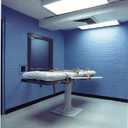A recent editorial in The Journal Star (Lincoln, Nebraska) expressed the paper’s shock at how the death penalty distorted a state criminal investigation to the extent that six innocent people were convicted of a murder they did not commit. Defendants were pressured to offer erroneous testimony through the threat of facing the death penalty. “The wrongful convictions show how the death penalty can distort the search for justice,” the editorial stated. “Investigators supplied suspects suggestions on what could have happened. They showed photos of the crime scene. Under pressure, suspects offered the stories authorities wanted.” The pressure that was used against the suspects was the threat of the electric chair. DNA testing later cleared the six men. The actual killer, whose guilt was confirmed by DNA tests, had already died in 1992. Unfortunately, that defendant had been cleared by a blood test conducted by forensic scientist who was later exposed as providing false and misleading evidence. Due to the prevalence of human error in the system, the editorial concluded, “The death penalty should be abolished.”
The full editorial may be read below:
Death penalty distorted Beatrice case
“The exoneration of six people who had been convicted for the murder of a Beatrice woman is a shocking example of the justice system going awry.
The wrongful convictions show how the death penalty can distort the search for justice.
The case boggles the mind.
How could the complicated and detailed scenario presented in court testimony turn out to be complete fiction?
One reason is the police interrogation methods used at the time. Investigators supplied suspects suggestions on what could have happened. They showed photos of the crime scene. Under pressure, suspects offered the stories authorities wanted.
And how was that pressure exerted?
By threatening the death penalty.
Four defendants were bullied into confessions when authorities threatened them with the electric chair, according to Attorney General Jon Bruning. Their testimony was used to convict Joseph Edgar White of first-degree murder. The other five pleaded guilty or no contest to lesser charges.
Advances in DNA analysis now show the prosecution’s case was entirely fabricated.
In the first step, the DNA evidence showed no link between the defendants and the crime.
In the second, conclusive step, the DNA evidence proved who had actually committed the crime in 1985.
That turned out to be Bruce Allen Smith, who died of AIDS in 1992 in Oklahoma City.
He had been a suspect early in the case, but authorities turned their attention elsewhere after he was apparently cleared by a blood test done by Oklahoma forensic specialist Joyce Gilchrist.
There’s now reason to suspect the accuracy of that blood test. Gilchrist was fired after allegations of incompetence and untruthfulness. A federal appeals court reversed a death sentence, finding that Gilchrist had provided evidence that she “knew was rendered false and misleading by evidence withheld from the defense.”
The circumstances of the Beatrice case ought to shake the faith of the most hardened defender of the death penalty.
The death penalty was never imposed in the case, but it played a role in sending six people to prison.
An error here, overzealousness there, and before anyone can stop it, the defendants are behind bars, out of sight and out of mind.
For decades, no one questioned the convictions. Then the case unraveled quickly and unequivocally, exposing the imperfection and error that will forever impair any criminal justice system operated by humans.
The next time Nebraska lawmakers once again consider whether to retain the death penalty, they should study this case. The evidence is fresh and convincing. The death penalty should be abolished.”
(The Journal Star, “Death Penalty Distorted Beatrice Case,” November 13, 2008). See Innocence and Editorial.



